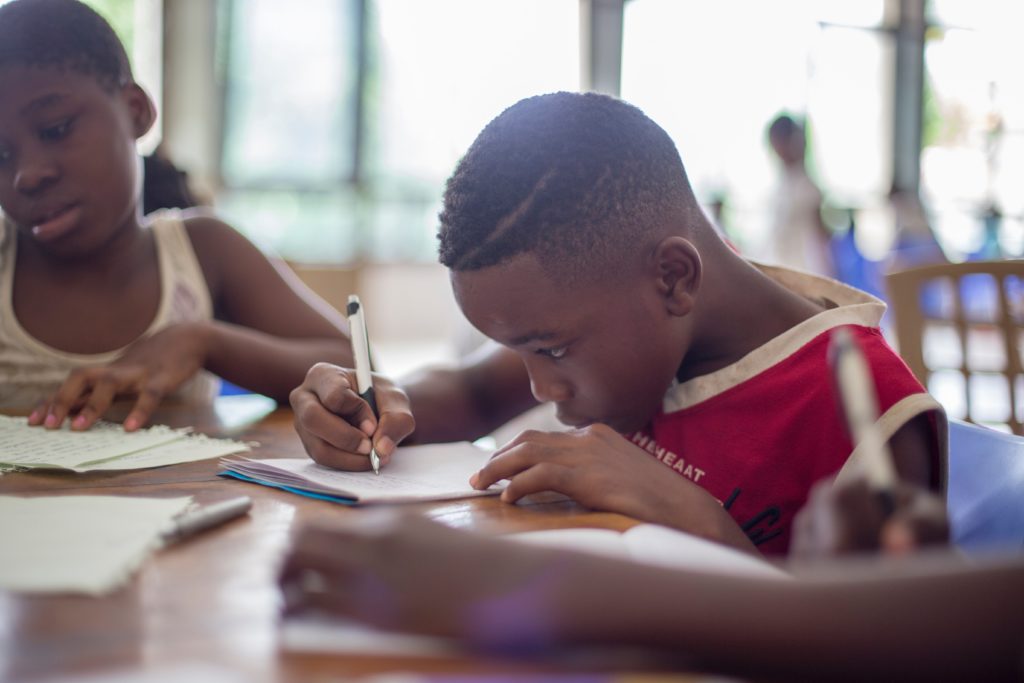Third grade reading proficiency represents an inflection point – setting a child on-track for high-school graduation and life success. Two-thirds of Georgia third graders cannot read proficiently, meaning they cannot read, write and comprehend. The good news is that all of us have the power to set kids up for success, by reading to them 15 minutes a day.
Words are power.
“Use your words,” is a common refrain for teachers and parents trying to work with a child. But what if the child doesn’t have the right words? How can they express themselves if they don’t have the tools to do so?
Language proficiency in kindergarten is the best indicator of reading proficiency in 3rd grade.
Reading at level in 3rd grade is the number one indicator of high school graduation. This is regardless of poverty or parental education status.
Students who cannot read proficiently at their grade level by the end of 3rd grade are four times more likely than their proficient counterparts to drop out of high school and are more likely to experience long-term behavioral and mental health issues.
In Georgia, 37% of 4th graders are reading below the National average for reading achievement.

Third grade signifies the shift from learning to read to reading to learn, as children begin to apply their reading skills to other subjects like math, science, and history. At this time, a child is expected to know how to read and write simple stories and to associate spoken words with their written form.
The good news is that we do not need fancy programs or expensive interventions. All of us have the tools necessary to help kids to enter kindergarten ready to read.
Starting at birth:
#1 Talk to children
#2 Read to children 15 minutes a day
Read on to learn how we can make simple changes in our lives and how we can advocate for life readiness for all children.

Recommended Steps for Families to Improve Home Reading Climate
- 15 min a day of reading starting at age 6 months is the number one way for kids to enter Kindergarten ready to learn to read.
- Limiting screen time and increasing exposure to books and other reading materials between the ages of 3 and 5 leads to better neurological development. Library cards in Georgia are free for all Georgia residents through the Pines Library system. These library cards provide access library books and online resources. Some counties issue temporary e-cards if you are unable to apply for a permanent.
- In the time of Covid-19, many parents have been forced to work from home and rely on television or devices to occupy their children. Bearing this in mind, parents should apply closed captioning to as much programming as possible. Closed captioning improves word recognition, ability to decode language, and supports vocabulary acquisition.
- Turn daily tasks into learning opportunities. Examples: placing labels on objects at home, having your child read labels at the grocery store, and reading signs out loud.
- Access free online reading resources such as PBS Kids, Get Ready to Read, and Reach Out and Read. Check out resources from our partners.
Definitions of Literacy Terms
| Term | Definition | NAEP Definition | Percentage of 4th grade Georgians in 2019 (NAEP) |
| Illiterate | Inability to read and write | ||
| Low Literacy / At Grade Level (basic) | Ability to read and write between the 5th and 8th grade level of difficulty. Low levels of reading comprehension. | At grade level (basic) – understand the words, answer simple questions, get through the written material in a certain amount of time | 31% |
| Literate / Proficient | Ability to read, write, and comprehend. (Comprehension is the ability to apply and utilize what is read). | Proficient – make reasonable inferences from the material. | 32% |
Frequently Asked Questions about Early Childhood Literacy
Factors that can influence a child’s reading and comprehension skills can include the home reading environment, maternal reading fluency, maternal mental health, and a child’s physical health.
Language nutrition refers to adult-child interactions that are rich in language and therefore critical for brain development. Access refers to children and families having access to support services and high-quality early childhood and elementary education. Productive learning climate refers to the impact of the school climate on social-emotional development, attendance, and engagement as well as long-term success. Teacher preparation and effectiveness refers to teachers being prepared to deliver high-quality, evidence-based instruction, specific to the unique needs of each child.
Lead exposure via paint, water, or soil can also have varying degrees of impact on the development of the brain. Children living in homes built before 1950, or government housing are at an increased risk of being exposed to lead and experiencing permanent brain damage.
Polybrominated diphenyl (PBDE’s), a compound that used to be commonly uses as a fire-retardant in fabrics, furniture, electronics, wire insulation, and infant products, can induce structural and functional changes in the brain of a developing fetus. The compound crosses the placental barrier and impair the development of functional connectivity in the reading network of the brain. While they are being phased out – avoiding ripped or torn furniture with exposed foam, can cut down on exposure.
Columbia University Center for Children’s Environmental Health out together guides on how to avoid common toxins in the home.
